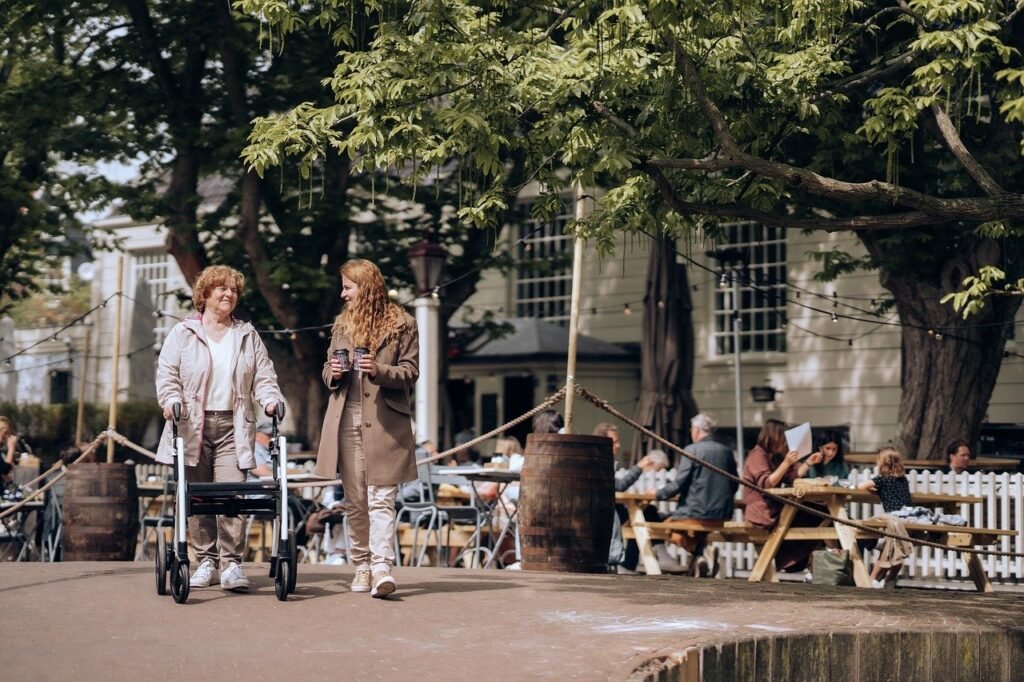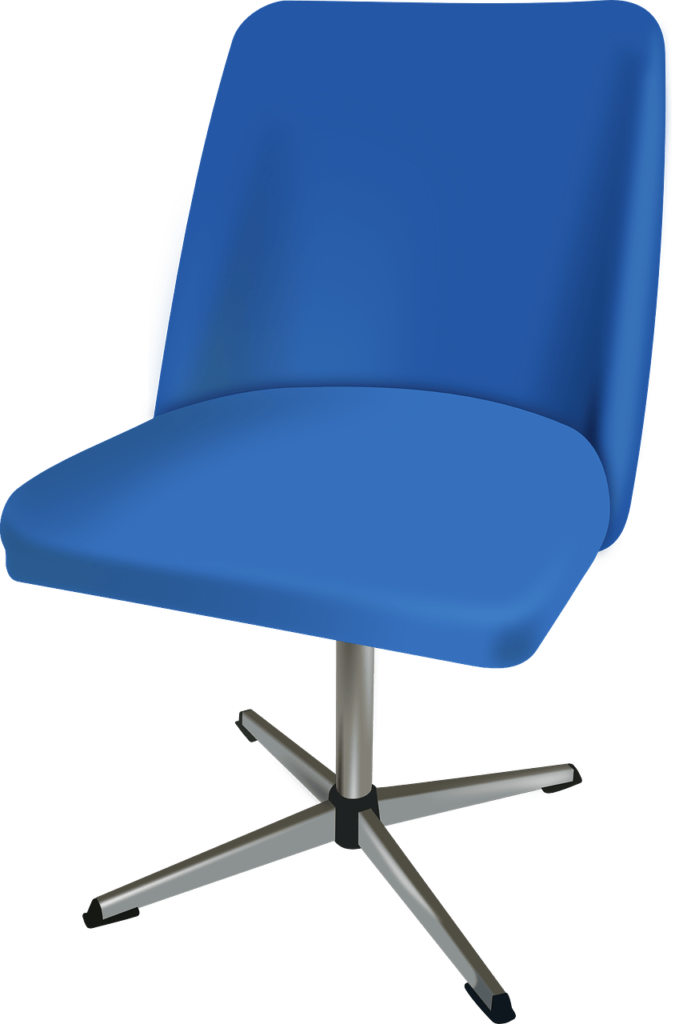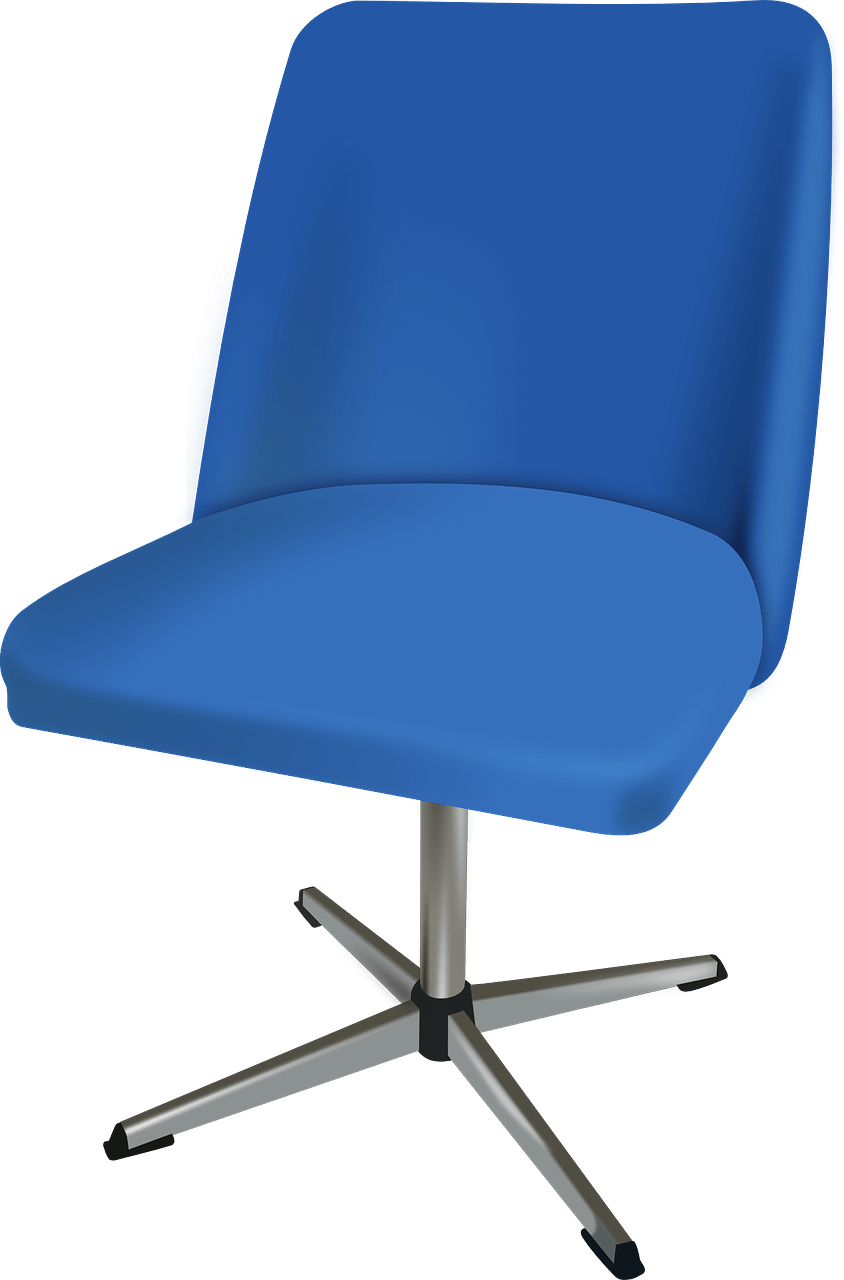Are you tired of constantly feeling uncomfortable and achy after sitting for long hours at your desk? Look no further! This article is here to introduce you to the world of ergonomic chairs specifically designed to provide comfort and support while promoting better posture. Say goodbye to backaches and neck strains with these chairs that prioritize your well-being above all else.

This image is property of pixabay.com.
Introduction
Welcome to the comprehensive guide on choosing and using ergonomic chairs for better posture! In today’s modern world, where many of us spend a significant amount of time seated at a desk or in front of a computer, maintaining good posture is crucial for our overall health and well-being. Luckily, ergonomic chairs are specifically designed to provide comfort and support, helping you maintain proper alignment and reduce the risk of musculoskeletal issues. In this article, we will explore the importance of good posture, understand the principles of ergonomics, learn how to choose the right ergonomic chair, discuss the top features to consider, highlight popular ergonomic chair brands, provide tips on maintaining good posture while sitting, debunk common myths and misconceptions, and conclude with the overall benefits of incorporating ergonomic chairs into your daily life.
Importance of Good Posture
Impact on overall health
Good posture is not just about looking poised and confident; it plays a significant role in your overall health. When you maintain proper alignment, your musculoskeletal system functions optimally, reducing the strain on your muscles and joints. This, in turn, can alleviate unnecessary fatigue, headaches, and back pain. Additionally, it promotes healthy blood circulation, digestion, and even helps in breathing effectively. By investing in an ergonomic chair, you can effectively support your posture and improve your well-being.
Effect on productivity and focus
Believe it or not, your posture can affect your productivity and ability to concentrate. When you slouch or slouch in your chair, it can lead to a decrease in energy levels and make it difficult to stay focused on your tasks. On the other hand, sitting with a straight back and aligned spine can boost your energy, enhance focus, and increase your overall work efficiency. By utilizing an ergonomic chair that supports good posture, you can create an environment that fosters productivity and aids in maintaining your concentration throughout the day.
Prevention of musculoskeletal issues
One of the major benefits of maintaining good posture is the prevention of musculoskeletal issues, including back pain, neck strain, and repetitive strain injuries (RSIs). Poor sitting posture can place excessive stress on your spine, leading to discomfort and potential long-term damage. Ergonomic chairs are specifically designed to provide the necessary support and encourage proper alignment of your spine, thereby reducing the risk of developing musculoskeletal problems associated with prolonged sitting. Investing in a high-quality ergonomic chair can be a proactive measure to safeguard your physical well-being.

This image is property of pixabay.com.
Understanding Ergonomics
Definition and principles of ergonomics
Ergonomics is the science of designing and organizing the work environment to fit the person using it. The primary goal of ergonomics is to ensure that the tools, equipment, and furniture we use fit our bodies and movements, rather than forcing our bodies to adapt to suboptimal conditions. The principles of ergonomics involve analyzing human capabilities and limitations to optimize the design of products and systems. By applying ergonomic principles, we can create environments that reduce physical stress, promote comfort, and enhance performance.
Ergonomic chair design features
Ergonomic chairs are specifically engineered to support the natural curves and movements of the body, providing comfort and stability during prolonged sitting. Some key design features to look for in ergonomic chairs include adjustable seat height and depth, proper contouring of the backrest to support the spine’s natural shape, lumbar support for the lower back, adjustable armrests to relieve strain on the shoulders and neck, and footrests to promote healthy blood circulation. These design elements work together to create a chair that promotes good posture and minimizes the risk of discomfort or injury.
Benefits of using ergonomic chairs
Using ergonomic chairs brings numerous benefits to your health and overall well-being. By promoting good posture, ergonomic chairs help reduce the risk of musculoskeletal issues such as back pain, neck strain, and RSIs. They also enhance comfort and reduce fatigue, allowing you to work for longer periods without feeling uncomfortable. Ergonomic chairs can improve blood circulation, alleviate pressure points, and reduce the strain on muscles and joints. Additionally, they contribute to increased productivity, focus, and overall work efficiency. Investing in an ergonomic chair is an investment in your long-term health and comfort.
Choosing the Right Ergonomic Chair
Adjustability for personalized comfort
When selecting an ergonomic chair, prioritize adjustability. Look for chairs that offer multiple adjustment options so that you can tailor the chair to your specific body and comfort needs. Key adjustable features to consider include seat height, seat depth, backrest height, and reclining mechanisms. Being able to customize the chair to fit your body ensures that you maintain optimal posture and comfort throughout the day.
Seat and back support
The seat and back support of an ergonomic chair are essential factors to consider. Look for chairs that offer adequate padding and cushioning to provide comfort and prevent pressure points. The seat should be wide enough to accommodate your hips and thighs comfortably. The backrest should have proper contouring to support the natural curves of your spine. It should also have sufficient height to support your entire back. By ensuring proper support for your seat and back, you can maintain good posture and minimize discomfort.
Lumbar support
Lumbar support is a critical element in an ergonomic chair. Look for chairs that provide adjustable lumbar support to cater to your unique needs. This feature helps maintain the natural curve of your lower back, relieving stress and preventing back pain. Proper lumbar support ensures that your spine remains aligned, reducing the risk of developing postural issues. Adjustability allows you to personalize the level of support based on your preference and comfort.
Armrests and footrests
Armrests and footrests are often overlooked but play a significant role in promoting good posture and reducing strain on your upper body. Opt for ergonomic chairs that offer adjustable armrests, allowing you to position them comfortably to support your arms and shoulders. Adjustable armrests ensure that your arms and shoulders remain relaxed, reducing tension and potential muscle strain. Similarly, footrests are beneficial in promoting healthy blood circulation and preventing swelling in the feet and legs. Look for chairs that offer adjustable footrests or a design that allows your feet to rest flat on the floor.
Materials and durability
Consider the materials used in the construction of the ergonomic chair. Look for chairs made from high-quality materials that are known for their durability and longevity. Materials like breathable mesh fabric can help regulate body temperature and ensure proper airflow, preventing excessive sweating and discomfort. Additionally, consider the sturdiness and weight capacity of the chair to ensure it can withstand regular use and support your body weight without compromising its structural integrity.

This image is property of pixabay.com.
Top Features to Consider
Adjustable seat height and depth
The ability to adjust the seat height and depth is crucial for personalized comfort and proper alignment. Look for chairs that offer a wide range of seat height adjustment options to accommodate different body types and desk heights. The seat depth should also be adjustable so that you can find the perfect balance between thigh support and optimal blood circulation.
Ergonomic backrest with proper contouring
The backrest of an ergonomic chair should have proper contouring to support the natural shape of your spine. Look for chairs that offer lumbar support and are designed to promote an upright sitting posture. A well-designed backrest prevents slouching and promotes the alignment of the spinal curves, reducing the risk of back pain and related issues.
Lumbar support for lower back
Lumbar support is crucial for maintaining good posture and reducing pressure on the lower back. Look for chairs with adjustable lumbar support, allowing you to customize the level of support based on your individual comfort needs. Adequate lumbar support ensures that your lower back maintains its natural curve, preventing strain and discomfort.
Armrests and their adjustability
Adjustable armrests are essential for supporting your arms and shoulders, reducing strain on the upper body. Look for chairs that offer armrests that can be adjusted in height, width, and angle. This feature enables you to position the armrests in a way that supports your natural arm and shoulder alignment, reducing tension and potential muscle strain.
Headrest for neck support
If you spend extended periods sitting at a desk, a headrest can provide additional support to your neck and upper back. Look for chairs that offer an adjustable headrest that can be positioned to support your specific height and comfort needs. A headrest helps prevent neck strain and promotes proper spinal alignment.
Swivel and mobility
Mobility is crucial when using an ergonomic chair. Look for chairs that offer a 360-degree swivel base, allowing you to easily reach different areas of your workspace without straining your body or twisting. Smooth mobility ensures that you can move freely and effortlessly, reducing the risk of repetitive strain injuries.
Breathable and comfortable upholstery
The upholstery material of the chair contributes to its overall comfort. Look for chairs with breathable and comfortable upholstery, such as mesh fabric or high-quality foam padding. Breathable materials allow air circulation, preventing excessive sweating and discomfort during prolonged sitting.
Durability and weight capacity
Consider the durability and weight capacity of the chair before making a purchase. Look for chairs made from sturdy materials that can withstand daily use and provide long-term durability. Additionally, ensure that the chair has an appropriate weight capacity to support your body weight without compromising its structural integrity.
Warranty and customer reviews
Before making a final decision, check the warranty offered by the manufacturer. A reliable warranty indicates the manufacturer’s confidence in their product and can give you peace of mind regarding any potential manufacturing defects. It is also beneficial to read customer reviews to gain insights into the experiences of other users and determine the overall quality and performance of the chair.
Price range
Ergonomic chairs are available in various price ranges. Set a budget and look for options that provide the best value within that range. Remember that investing in a high-quality ergonomic chair is an investment in your health and comfort. Consider your specific needs, preferences, and financial constraints when selecting the chair that suits you best.
Popular Ergonomic Chair Brands
HermanMiller
HermanMiller is a renowned brand that has been at the forefront of ergonomic chair design for decades. Their chairs are known for their precise engineering, comfort, and stylish aesthetics. From the iconic Aeron chair to the Embody chair, HermanMiller offers a range of options that cater to various body types and comfort preferences.
Steelcase
Steelcase is another reputable brand known for its innovative and ergonomic chair designs. Their chairs emphasize the balance between comfort, support, and style. Steelcase chairs, such as the Gesture and Leap models, are highly adjustable and promote healthy posture during prolonged sitting.
Humanscale
Humanscale is a brand that focuses on minimalist design and ergonomics. Their chairs are designed to adapt to the user’s movements and promote healthy sitting postures. With models like the Freedom and Diffrient Smart, Humanscale offers chairs that prioritize both aesthetics and functionality.
HON
HON is a brand that offers affordable yet reliable ergonomic chairs. Their chairs are designed with comfort and durability in mind, making them ideal for those on a budget. HON chairs, such as the Ignition and Convergence series, offer a range of adjustable features and customizable options.
Ergohuman
Ergohuman is a brand that specializes in providing ergonomic chairs that prioritize comfort and support. Their chairs are designed with advanced features like adjustable seat depth, lumbar support, and multi-dimensional armrests. The Ergohuman series offers a range of options to cater to different users’ needs.
How to Maintain Good Posture While Sitting
Proper chair height and positioning
Maintaining proper chair height and positioning is crucial for good posture. Adjust your chair so that your feet rest flat on the floor, and your knees are at a 90-degree angle. Your hips should be slightly higher than your knees, promoting a neutral pelvis position. Position the chair close to the desk to minimize reaching and straining.
Using lumbar support
Utilize the adjustable lumbar support provided by your ergonomic chair. Position the lumbar support so that it fits into the natural curve of your lower back. This helps maintain proper spinal alignment and reduces the risk of slouching or straining your lower back.
Maintaining neutral spine alignment
Focus on maintaining a neutral spine alignment while sitting. Your back should be straight, and your shoulders relaxed. Avoid slouching or hunching forward. Ensure that your head is aligned with your spine and your chin is parallel to the floor. Practicing this neutral spine alignment reduces strain on your muscles and joints.
Taking breaks and stretching
Even with an ergonomic chair, it’s important to take regular breaks from sitting. Incorporate short breaks every 30 minutes to an hour, during which you can stand up, stretch, and move around. This helps alleviate muscle tension and stiffness, promoting circulation and overall well-being.
Incorporating standing and movement
Consider incorporating standing and movement into your work routine. Standing desks or adjustable desks can provide an alternative to prolonged sitting. You can also introduce dynamic movement by incorporating regular walking breaks or using stability balls as an active seating option. Incorporating standing and movement helps prevent prolonged static postures, reducing the strain on your body.
Myths and Misconceptions
Ergonomic chairs are only for office use
Contrary to popular belief, ergonomic chairs are not limited to office use. They can benefit anyone who spends significant time sitting, whether it be at home, in a home office, or even while gaming or engaging in hobbies. Ergonomic chairs promote good posture and support the body in any seated environment.
One size fits all
Another common misconception is that ergonomic chairs are one-size-fits-all. In reality, ergonomic chairs are designed to provide adjustability and customization to fit various body types and comfort preferences. Look for chairs that offer multiple adjustment options to ensure a comfortable and personalized fit.
Ergonomic chairs can fix existing posture problems
While ergonomic chairs can significantly improve your posture and reduce the risk of developing musculoskeletal issues, they cannot fix existing posture problems on their own. Correcting posture involves a comprehensive approach that includes ergonomics, regular exercise, stretching, and conscious body awareness. Ergonomic chairs should be used as part of an overall strategy to maintain and improve posture.
Conclusion
Investing in an ergonomic chair is investing in your health, comfort, and overall well-being. By maintaining good posture, you can reduce the risk of musculoskeletal issues, improve productivity, and enhance your overall work experience. Understanding the importance of good posture and ergonomics, as well as choosing the right ergonomic chair with the appropriate features, can make a significant difference in your daily life. By incorporating proper sitting habits, taking regular breaks, and debunking common myths, you can maintain good posture and reap the benefits of using ergonomic chairs. Remember, your posture matters, and with the right ergonomic chair, you can make a positive impact on your physical health and overall work performance.
